
Teacher Candidate
Evaluation Rubric
North Carolina
Educator Evaluation System

i
Teacher Candidate Evaluation Rubric
The following rubric was developed to align with and reflect the North Carolina Professional Teaching
Standards approved by the North Carolina State Board of Education on June 7, 2007. The rubric also
parallels the North Carolina Inservice Teacher Evaluation Rubric that is used to assess the professional
performance of inservice teachers throughout the state. However, the Teacher Candidate Evaluation Rubric
has been adapted to reflect the specific contexts and opportunities available to teacher candidates throughout
their programs, and to allow distinctions to be made across each of four levels of performance on the North
Carolina Professional Teaching Standards.
Preservice teacher (candidate) performance should be rated on each element within each Standard as
characteristic of a practitioner at one of four levels: Emergent Candidate, Developing Candidate, Proficient
Candidate or Accomplished Candidate. These levels are cumulative across the rows of the rubric in that a
“Proficient Candidate” teacher must exhibit the characteristics encompassed under the “Emergent
Candidate” and “Developing Candidate” levels in addition to those described at the “Proficient Candidate”
level. To be recommended for licensure, a candidate must demonstrate professional performance at no less
than the Proficient Candidate level on each element and on each standard
.
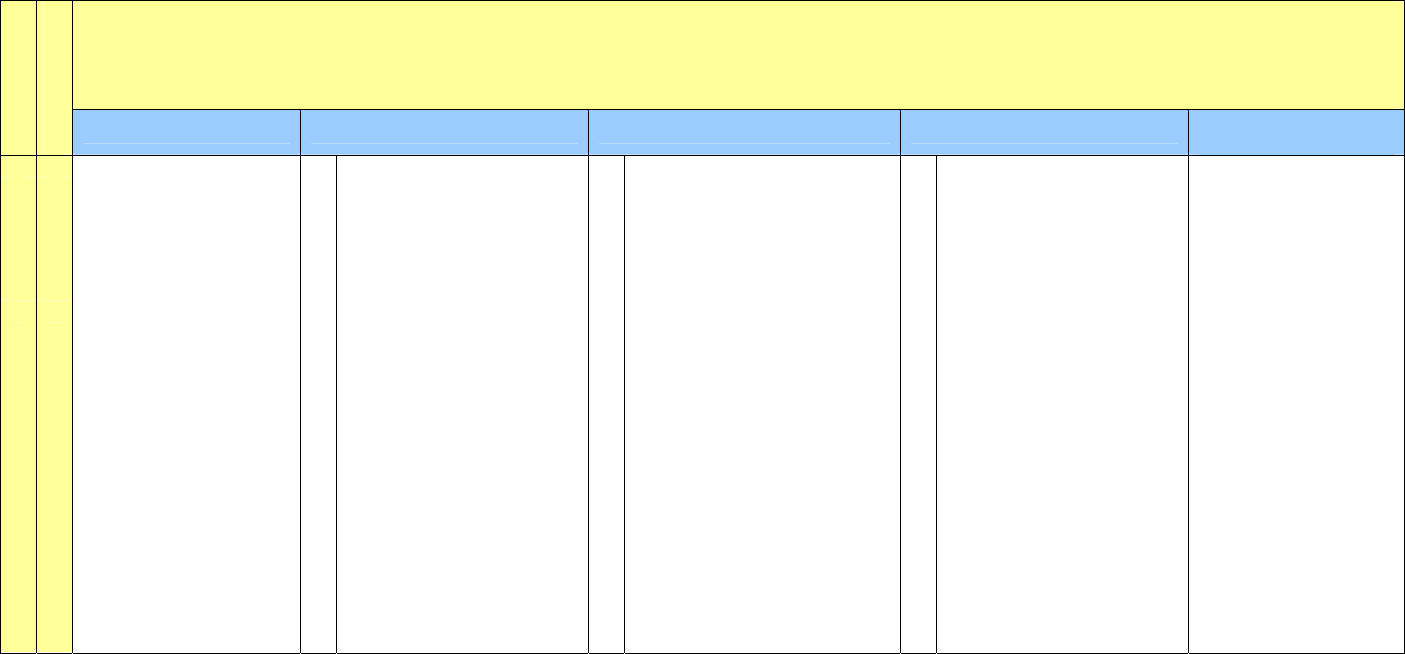
Approved by the NC State Board of Education
September 11, 2008
1
Standard 1: Teachers demonstrate leadership
1a. Teachers lead in their classrooms. Teachers demonstrate leadership by taking responsibility for the progress of all students to ensure that they graduate from high
school, are globally competitive for work and postsecondary education, and are prepared for life in the 21st century. Teachers communicate this vision to their students. Using a
variety of data sources, they organize, plan, and set goals that meet the needs of the individual student and the class. Teachers use various types of assessment data during the school
year to evaluate student progress and to make adjustments to the teaching and learning process. They establish a safe, orderly environment, and create a culture that empowers
students to collaborate and become lifelong learners.
Observation
Artifact
Emergent Candidate Developing Candidate Proficient Candidate Accomplished Candidate
Not Demonstrated
(Comment Required)
Acknowledges the
importance of high school
graduation for students.
Identifies the types of data
that are commonly available
to and used in schools.
AND
Demonstrates how teachers
contribute to students’ progress
toward high school graduation
by following the North
Carolina Standard Course of
Study.
Uses data to identify the skills
and abilities of students.
Describes the characteristics
and importance of a safe and
orderly classroom environment.
Understands positive
management of student
behavior, including strategies
of conflict resolution and anger
management, effective
communication for defusing
and deescalating disruptive or
dangerous behavior, and safe
and appropriate use of
seclusion and restraint.
AND
Evaluates the progress of students
toward high school graduation
using a variety of assessment data
measuring goals of the North
Carolina Standard Course of
Study.
Draws on appropriate data to
develop classroom and
instructional plans.
Maintains a safe and orderly
classroom that facilitates student
learning.
Uses positive management of
student behavior, including
strategies of conflict resolution and
anger management, effective
communication for defusing and
deescalating disruptive or
dangerous behavior, and safe and
appropriate seclusion and restraint.
AND
Takes responsibility for student
progress toward high school
graduation by aligning
instruction and assessment with
the North Carolina Standard
Course of Study.
Maintains or supports a
classroom culture that
empowers students to
collaborate and become
lifelong learners.
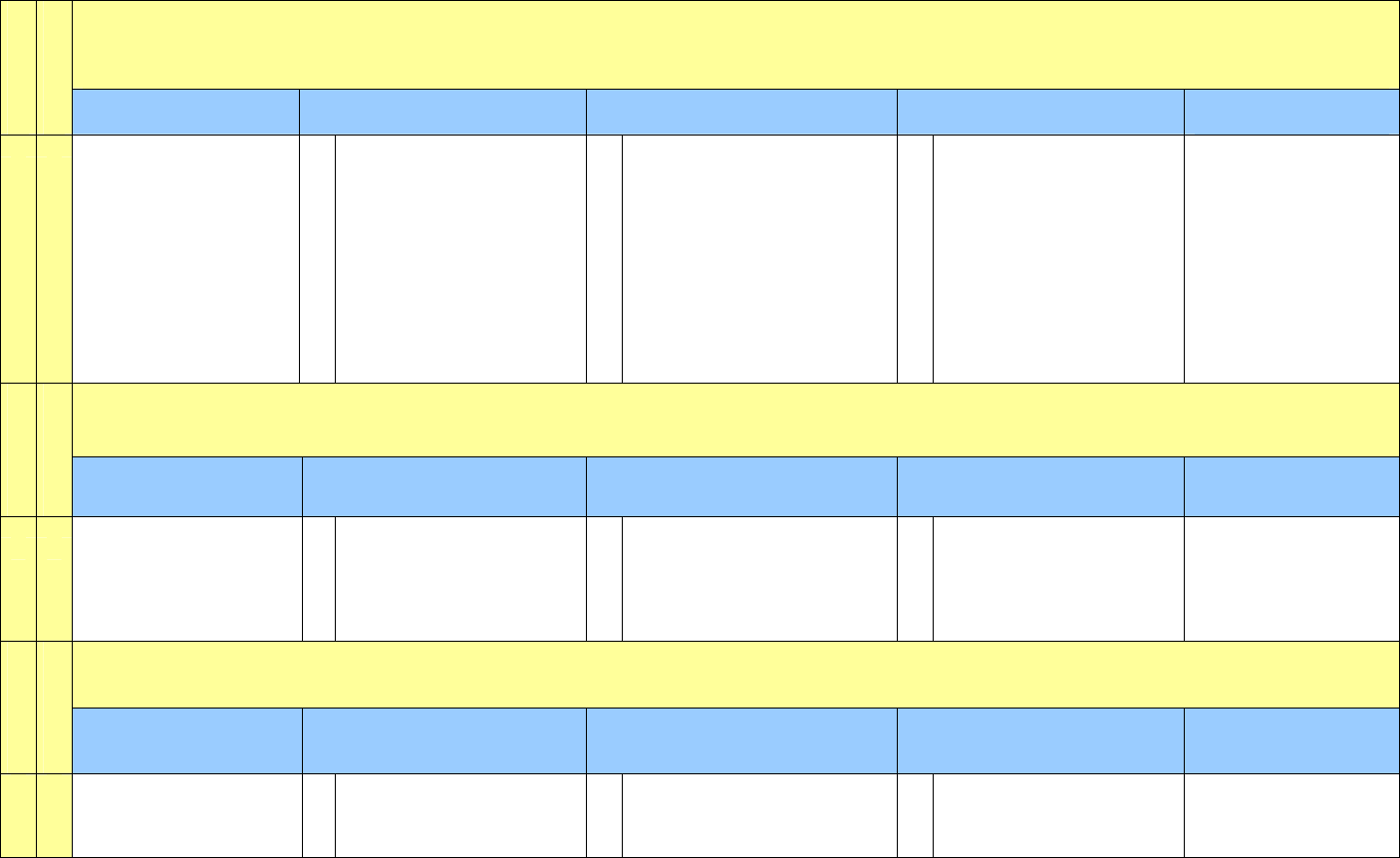
Approved by the NC State Board of Education
September 11, 2008
2
1b. Teachers demonstrate leadership in the school. Teachers work collaboratively with school personnel to create a professional learning community. They analyze
and use local, state, and national data to develop goals and strategies in the school improvement plan that enhances student learning and teacher working conditions. Teachers
provide input in determining the school budget and in the selection of professional development that meets the needs of students and their own professional growth. They participate
in the hiring process and collaborate with their colleagues to mentor and support teachers to improve the effectiveness of their departments or grade levels.
Observation
Artifact
Emergent Candidate Developing Candidate Proficient Candidate Accomplished Candidate
Not Demonstrated
(Comment Required)
Recognizes opportunities
for involvement in
professional learning
activities.
AND
Attends professional learning
activities.
AND
Engages in collaborative and
collegial professional learning
activities.
Identifies the characteristics or
critical elements of a school
improvement plan.
Displays the ability to use
appropriate data to identify areas
of need that should be addressed in
a school improvement plan.
AND
Participates in professional
learning community (PLC)
activities.
Works with others in
developing and/or
implementing school
improvement activities.
1c. Teachers lead the teaching profession. Teachers strive to improve the teaching profession. They contribute to the establishment of positive working relationships in
the school. They actively participate in and advocate for the decision-making structures in education and government that take advantage of the expertise of teachers. Teachers
promote professional growth for all educators and collaborate with their colleagues to improve the profession.
Observation
Artifact
Emergent Candidate Developing Candidate Proficient Candidate Accomplished Candidate
Not Demonstrated
(Comment Required)
Recognizes the
responsibility of teachers for
professional improvement
and support.
AND
Recognizes the need and
identifies opportunities for
professional growth.
AND
Participates in professional
development and growth activities.
Begins to develop professional
relationships and networks.
AND
Seeks additional opportunities
for professional development
and growth.
Extends professional
relationships and networks.
1d. Teachers advocate for schools and students. Teachers advocate for positive change in policies and practices affecting student learning. They participate in the
implementation of initiatives to improve the education of students.
Observation
Artifact
Emergent Candidate Developing Candidate Proficient Candidate Accomplished Candidate
Not Demonstrated
(Comment Required)
Demonstrates awareness of
school practices and
policies.
AND
Identifies the policies and
practices affecting students’
learning.
AND
Implements and adheres to policies
and practices positively affecting
students’ learning.
AND
Works with others to develop
and/or revise policies and
practices to improve students’
learning.

Approved by the NC State Board of Education
September 11, 2008
3
1e. Teachers demonstrate high ethical standards. Teachers demonstrate ethical principles including honesty, integrity, fair treatment, and respect for others. Teachers
uphold the Code of Ethics for North Carolina Educators (effective June 1, 1997) and the Standards for Professional Conduct adopted April 1, 1998 (www.ncptsc.org).
Observation
Artifact
Emergent Candidate Developing Candidate Proficient Candidate Accomplished Candidate
Not Demonstrated
(Comment Required)
Recognizes the need for
ethical professional
behavior.
AND
Articulates the importance of
ethical behavior as outlined in
the Code of Ethics for North
Carolina Educators and the
Standards for Professional
Conduct.
AND
Upholds the Code of Ethics for
North Carolina Educators and the
Standards for Professional
Conduct.
AND
Models the tenets of the Code
of Ethics for North Carolina
Educators and the Standards
for Professional Conduct, and
encourages others to do the
same.
Standard 2: Teachers establish a respectful environment for a diverse population of students
2a. Teachers provide an environment in which each child has a positive, nurturing relationship with caring adults. Teachers provide an
environment for student learning that is inviting, respectful, supportive, inclusive, and flexible.
Observation
Artifact
Emergent Candidate Developing Candidate Proficient Candidate Accomplished Candidate
Not Demonstrated
(Comment Required)
Articulates the importance
of appropriate and caring
learning environments for
children.
AND
Recognizes and can explain
aspects of a respectful and
effective learning environment.
AND
Maintains a positive and nurturing
learning environment.
AND
Enhances an inviting,
respectful, inclusive, flexible,
and supportive learning
environment.
2b. Teachers embrace diversity in the school community and in the world. Teachers demonstrate their knowledge of the history of diverse cultures and their
role in shaping global issues. They actively select materials and develop lessons that counteract stereotypes and incorporate histories and contributions of all cultures. Teachers
recognize the influence of race, ethnicity, gender, religion, and other aspects of culture on a student’s development and personality. Teachers strive to understand how a student’s
culture and background may influence his or her school performance. Teachers consider and incorporate different points of view in their instruction.
Observation
Artifact
Emergent Candidate Developing Candidate Proficient Candidate Accomplished Candidate
Not Demonstrated
(Comment Required)
Acknowledges that diverse
cultures impact the world.
Identifies the range and
aspects of diversity of
students in the classroom.
AND
Displays knowledge of diverse
cultures, their histories, and
their roles in shaping global
issues.
Acknowledges the influence of
all aspects of diversity on
students’ development and
attitudes.
AND
Appropriately uses materials or
lessons that counteract stereotypes
and acknowledges the
contributions of all cultures.
Incorporates different points of
view in instruction.
Understands the influence of
diversity and plans instruction
accordingly.
AND
Consistently integrates
culturally relevant and/or
sensitive materials and ideas
throughout the curriculum.
Builds on diversity as an asset
in the classroom.
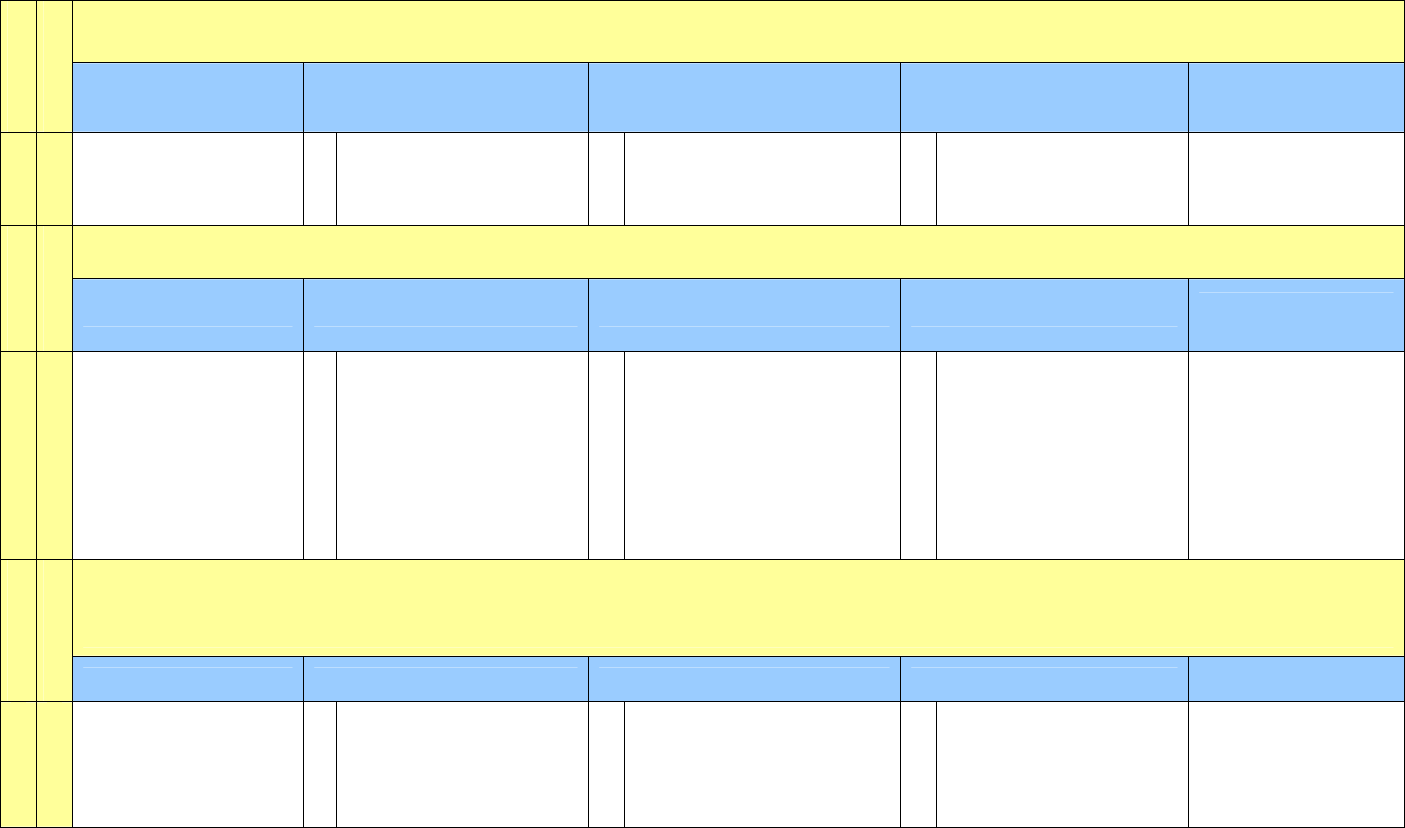
Approved by the NC State Board of Education
September 11, 2008
4
2c. Teachers treat students as individuals. Teachers maintain high expectations, including graduation from high school, for students of all backgrounds. Teachers
appreciate the differences and value the contribution of each student in the learning environment by building positive, appropriate relationships.
Observation
Artifact
Emergent Candidate Developing Candidate Proficient Candidate Accomplished Candidate
Not Demonstrated
(Comment Required)
Articulates the need to treat
students as individuals.
AND
Encourages and values
individual student
contributions, regardless of
background or ability.
AND
Maintains a learning environment
that conveys high expectations of
every student.
AND
Enhances a learning
environment that meets the
needs of individual students.
2d. Teachers adapt their teaching for the benefit of students with special needs. Teachers collaborate with the range of support specialists to help meet the
special needs of all students. Through inclusion and other models of effective practice, teachers engage students to ensure that their needs are met.
Observation
Artifact
Emergent Candidate Developing Candidate Proficient Candidate Accomplished Candidate
Not Demonstrated
(Comment Required)
Recognizes that students
have individual learning
needs.
AND
Understands resources and
strategies that can provide
assistance in meeting the
special learning needs of
individual students.
AND
Cooperates with specialists and
uses resources to support the
special learning needs of all
students.
Uses research-verified strategies to
provide effective learning
activities for students with special
needs.
AND
Coordinates and collaborates
with the full range of support
specialists and resources to
help meet the special needs of
all students.
Effectively engages special
needs students in learning
activities and ensures their
unique learning needs are met.
2e. Teachers work collaboratively with the families and significant adults in the lives of their students. Teachers recognize that educating children is a
shared responsibility involving the school, parents or guardians, and the community. Teachers improve communication and collaboration between the school, the home, and the
community in order to promote trust and understanding and build partnerships with all segments of the school community. Teachers seek solutions to overcome cultural and
economic obstacles that may stand in the way of effective family and community involvement in the education of their students.
Observation
Artifact
Emergent Candidate Developing Candidate Proficient Candidate Accomplished Candidate
Not Demonstrated
(Comment Required)
Recognizes factors that can
diminish or enhance
involvement by parents,
guardians, and the
community in schools.
AND
Understands strategies for
enhancing communication
between home and school and
for engaging parents,
guardians, and community
members in schools.
AND
Communicates and collaborates
with the home and community for
the benefit of students.
AND
Seeks and implements
solutions to overcome obstacles
to participation of families and
communities.
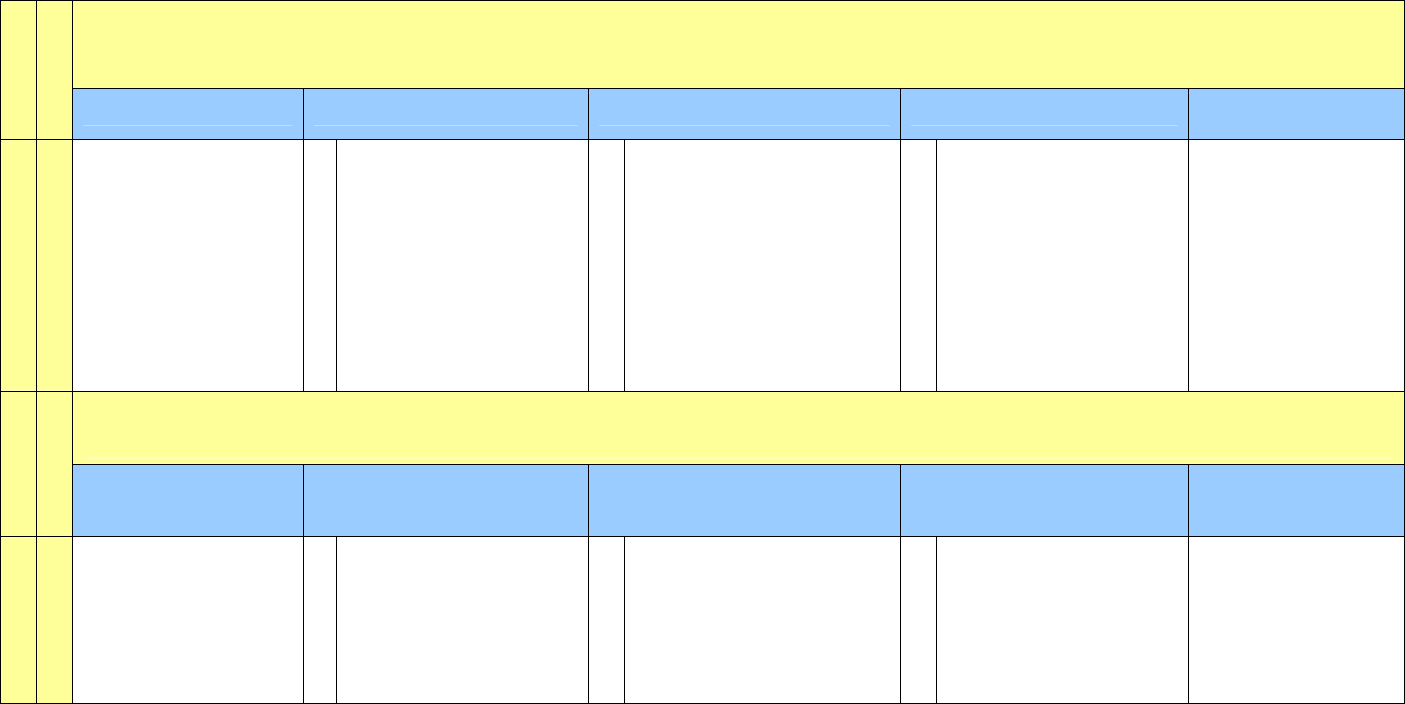
Approved by the NC State Board of Education
September 11, 2008
5
Standard 3: Teachers know the content they teach
3a. Teachers align their instruction with the North Carolina Standard Course of Study. In order to enhance the North Carolina Standard Course of Study,
teachers investigate the content standards developed by professional organizations in their specialty area. They develop and apply strategies to make the curriculum rigorous and
relevant for all students and provide a balanced curriculum that enhances literacy skills. Elementary teachers have explicit and thorough preparation in literacy instruction. Middle
and high school teachers incorporate literacy instruction within the content area or discipline.
Observation
Artifact
Emergent Candidate Developing Candidate Proficient Candidate Accomplished Candidate
Not Demonstrated
(Comment Required)
Demonstrates awareness of
the North Carolina Standard
Course of Study.
Understands the importance
of literacy instruction across
all subjects, grades and ages.
AND
Demonstrates knowledge of the
North Carolina Standard
Course of Study by referencing
it in the preparation of lesson
plans.
Integrates literacy instruction in
individual lessons and in
particular subject areas.
AND
Develops and applies lessons
based on the North Carolina
Standard Course of Study.
Integrates effective literacy
instruction throughout the
curriculum and across content
areas to enhance students’
learning.
AND
Develops and applies strategies
reflecting the North Carolina
Standard Course of Study and
standards developed by
professional organizations to
make the curriculum balanced,
rigorous, and relevant.
Evaluates and reflects upon the
effectiveness of literacy
instruction within and across
content areas.
3b. Teachers know the content appropriate to their teaching specialty. Teachers bring a richness and depth of understanding to their classrooms by knowing
their subjects beyond the content they are expected to teach and by directing students’ natural curiosity into an interest in learning. Elementary teachers have broad knowledge across
disciplines. Middle school and high school teachers have depth in one or more specific content areas or disciplines.
Observation
Artifact
Emergent Candidate Developing Candidate Proficient Candidate Accomplished Candidate
Not Demonstrated
(Comment Required)
Successfully completes
general education
coursework across the
required range of
disciplines.
AND
Demonstrates a basic level of
content knowledge in the
teaching specialty.
AND
Demonstrates an appropriate level
of content knowledge in the
teaching specialty.
Encourages students to investigate
the content area to expand their
knowledge and satisfy their natural
curiosity.
AND
Demonstrates extensive
knowledge of content in the
teaching specialty.
Prompts students’ curiosity for
learning beyond the required
coursework.

Approved by the NC State Board of Education
September 11, 2008
6
3c. Teachers recognize the interconnectedness of content areas/disciplines. Teachers know the links and vertical alignment of the grade or subject they teach and
the North Carolina Standard Course of Study. Teachers understand how the content they teach relates to other disciplines in order to deepen understanding and connect learning for
students. Teachers promote global awareness and its relevance to subjects they teach.
Observation
Artifact
Emergent Candidate Developing Candidate Proficient Candidate Accomplished Candidate
Not Demonstrated
(Comment Required)
Recognizes the importance of
interdisciplinary learning.
Understands the importance of
global awareness for students.
AND
Articulates the links between
grade/subject and the North
Carolina Standard Course of
Study.
Displays global awareness.
AND
Demonstrates knowledge of links
between grade/subject and the
North Carolina Standard Course
of Study by relating content to
other disciplines.
Relates global awareness to the
subject.
AND
Integrates the links and the
vertical alignment of the grade
or subject area and the North
Carolina Standard Course of
Study. Effectively and broadly
relates content to other
disciplines.
Integrates global awareness
activities throughout lesson
plans and classroom
instructional practices.
3d. Teachers make instruction relevant to students. Teachers incorporate 21st century life skills into their teaching deliberately, strategically, and broadly. These skills
include leadership, ethics, accountability, adaptability, personal productivity, personal responsibility, people skills, self-direction, and social responsibility. Teachers help their students
understand the relationship between the North Carolina Standard Course of Study and 21st century content, which includes global awareness; financial, economic, business and
entrepreneurial literacy; civic literacy; and health awareness.
Observation
Artifact
Emergent Candidate Developing Candidate Proficient Candidate Accomplished Candidate
Not Demonstrated
(Comment Required)
Recognizes the relationship
between the North Carolina
Standard Course of Study and
life in the 21st century.
Identifies 21
st
century skills and
content as specified in the
Framework for 21
st
Century
Learning and Critical Elements
for 21
st
Century Skills.
AND
Identifies relationships between
the North Carolina Standard
Course of Study and life in the
21st century.
Demonstrates understanding of
21
st
century skills and content
as specified in the Framework
for 21
st
Century Learning and
Critical Elements for 21
st
Century Skills.
AND
Integrates 21st century skills and
content in instruction.
AND
Consistently integrates 21st
century skills and content
throughout classroom
instruction and assessment.
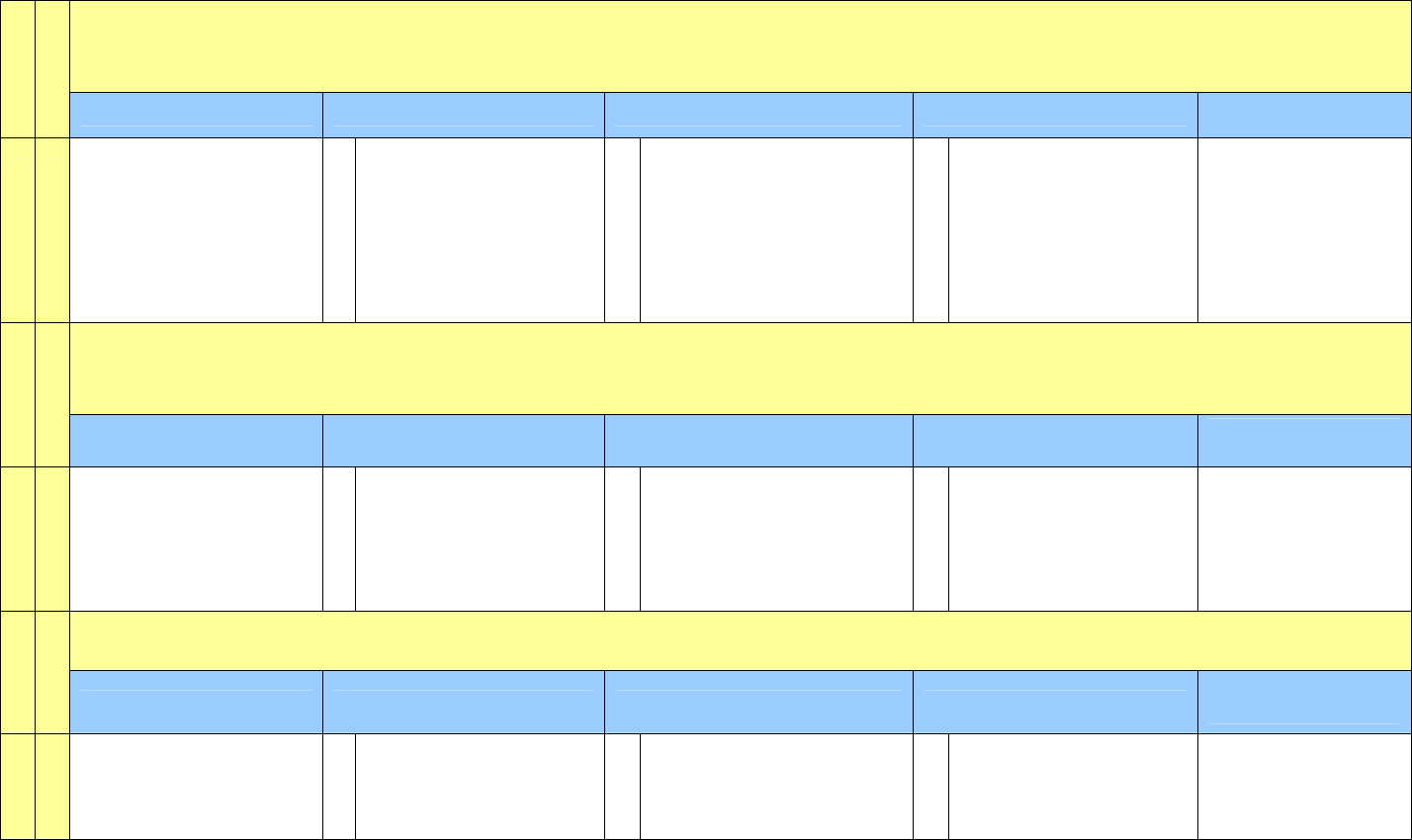
Approved by the NC State Board of Education
September 11, 2008
7
Standard 4: Teachers facilitate learning for their students
4a. Teachers know the ways in which learning takes place, and they know the appropriate levels of intellectual, physical, social, and emotional
development of their students. Teachers know how students think and learn. Teachers understand the influences that affect individual student learning (development, culture,
language proficiency, etc.) and differentiate their instruction accordingly. Teachers keep abreast of evolving research about student learning. They adapt resources to address the
strengths and weaknesses of their students.
Observation
Artifact
Emergent Candidate Developing Candidate Proficient Candidate Accomplished Candidate
Not Demonstrated
(Comment Required)
Understands the developmental
levels of students.
AND
Demonstrates awareness of the
influence of developmental
levels on students’ learning.
Demonstrates an understanding
of methods for differentiating
instruction to accommodate
developmental differences in
students.
AND
Identifies developmental levels of
individual students and plans
instruction accordingly.
Assesses and uses resources
needed to address strengths and
weaknesses of students.
AND
Appropriately differentiates
instruction.
4b. Teachers plan instruction appropriate for their students. Teachers collaborate with their colleagues and use a variety of data sources for short
and long range planning based on the North Carolina Standard Course of Study. These plans reflect an understanding of how students learn. Teachers engage students
in the learning process. They understand that instructional plans must be consistently monitored and modified to enhance learning. Teachers make the curriculum responsive to cultural
differences and individual learning needs.
Observation
Artifact
Emergent Candidate Developing Candidate Proficient Candidate Accomplished Candidate
Not Demonstrated
(Comment Required)
Recognizes data sources
important to planning
instruction.
AND
Uses a variety of data for short-
and long-range planning of
instruction.
Monitors and modifies
instructional plans to enhance
student learning.
AND
Collaborates with colleagues to
monitor student performance and
make instruction responsive to
cultural differences and individual
learning needs.
AND
Works collaboratively with
other school staff to develop or
maintain a culturally and
developmentally supportive
school environment.
4c. Teachers use a variety of instructional methods. Teachers choose the methods and techniques that are most effective in meeting the needs of their students as they
strive to eliminate achievement gaps. Teachers employ a wide range of techniques including information and communication technology, learning styles, and differentiated instruction.
Observation
Artifact
Emergent Candidate Developing Candidate Proficient Candidate Accomplished Candidate
Not Demonstrated
(Comment Required)
Understands a range of methods
and materials that can be
applied in the classroom.
AND
Demonstrates awareness of the
variety of methods and
materials necessary to meet the
needs of all students.
AND
Uses a variety of appropriate
methods and materials to meet the
needs of all students.
AND
Consistently enables the
success of all students through
the selection and use of
appropriate methods and
materials.
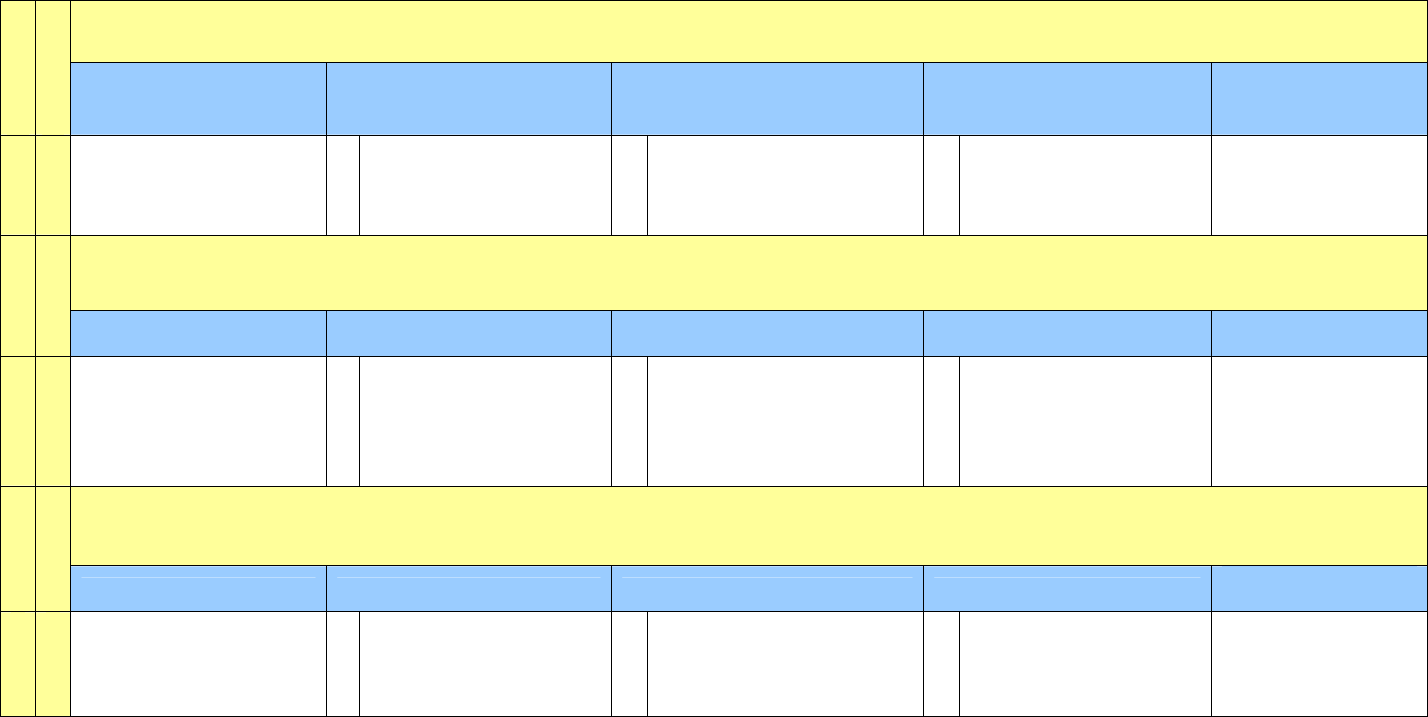
Approved by the NC State Board of Education
September 11, 2008
8
4d. Teachers integrate and utilize technology in their instruction. Teachers know when and how to use technology to maximize student learning. Teachers help
students use technology to learn content, think critically, solve problems, discern reliability, use information, communicate, innovate, and collaborate.
Observation
Artifact
Emergent Candidate Developing Candidate Proficient Candidate Accomplished Candidate
Not Demonstrated
(Comment Required)
Demonstrates knowledge of
methods for utilizing
technology in instruction.
AND
Assesses effective types of
technology to use for
instruction.
AND
Integrates technology with
instruction to maximize students’
learning.
AND
Engages students in higher
level thinking through the
integration of technology.
4e. Teachers help students develop critical-thinking and problem-solving skills. Teachers encourage students to ask questions; think creatively; develop and test
innovative ideas; synthesize knowledge and draw conclusions. They help students exercise and communicate sound reasoning; understand connections; make complex choices; and
frame, analyze, and solve problems.
Observation
Artifact
Emergent Candidate Developing Candidate Proficient Candidate Accomplished Candidate
Not Demonstrated
(Comment Required)
Demonstrates an understanding
of the importance of developing
students’ critical-thinking and
problem-solving skills.
AND
Demonstrates knowledge of
processes needed to support
students in acquiring critical-
thinking and problem-solving
skills.
AND
Integrates specific instruction that
helps students develop the ability
to apply processes and strategies
for critical thinking and problem
solving.
AND
Creates or maintains instruction
that consistently engages
students in the processes of
critical thinking and problem
solving in meaningful contexts.
4f. Teachers help students work in teams and develop leadership qualities. Teachers teach the importance of cooperation and collaboration. They organize
learning teams in order to help students define roles, strengthen social ties, improve communication and collaborative skills, interact with people from different cultures and
backgrounds, and develop leadership qualities.
Observation
Artifact
Emergent Candidate Developing Candidate Proficient Candidate Accomplished Candidate
Not Demonstrated
(Comment Required)
Recognizes the need to
encourage the development of
cooperation, collaboration, and
student leadership.
AND
Demonstrates awareness of
multiple approaches or
strategies for developing and
supporting student learning
teams.
AND
Organizes student learning teams
for the purpose of developing
cooperation, collaboration, and
student leadership.
AND
Encourages students to create
and manage learning teams.
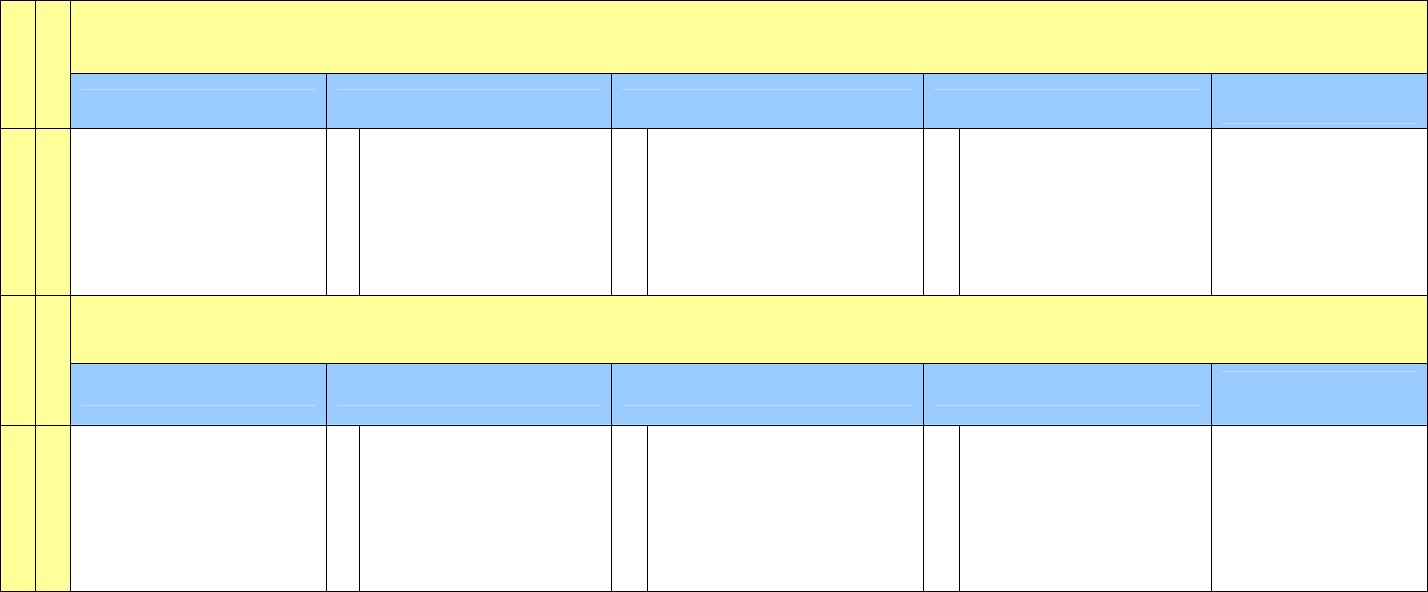
Approved by the NC State Board of Education
September 11, 2008
9
4g. Teachers communicate effectively. Teachers communicate in ways that are clearly understood by their students. They are perceptive listeners and are able to
communicate with students in a variety of ways even when language is a barrier. Teachers help students articulate thoughts and ideas clearly and effectively.
Observation
Artifact
Emergent Candidate Developing Candidate Proficient Candidate Accomplished Candidate
Not Demonstrated
(Comment Required)
Communicates effectively both
orally and in writing.
Recognizes a variety of
methods for communicating
effectively with students.
AND
Demonstrates the ability to
communicate effectively with
students.
Provides opportunities for
students to articulate thoughts
and ideas.
AND
Uses a variety of methods to
communicate effectively with all
students.
Consistently encourages and
supports students to articulate
thoughts and ideas clearly and
effectively.
AND
Establishes classroom practices
that encourage all students to
develop effective
communication skills.
4h. Teachers use a variety of methods to assess what each student has learned. Teachers use multiple indicators, including formative and summative assessments,
to evaluate student progress and growth as they strive to eliminate achievement gaps. Teachers provide opportunities, methods, feedback, and tools for students to assess themselves and
each other. Teachers use 21st Century assessment systems to inform instruction and demonstrate evidence of students’ 21st century knowledge, skills, performance, and dispositions.
Observation
Artifact
Emergent Candidate Developing Candidate Proficient Candidate Accomplished Candidate
Not Demonstrated
(Comment Required)
Demonstrates awareness of
multiple indicators or measures
of student progress.
AND
Interprets data on student
progress accurately and can
draw appropriate conclusions.
AND
Uses multiple indicators, both
formative and summative, to
monitor and evaluate students’
progress and to inform instruction.
Provides evidence that students
attain 21st century knowledge,
skills and dispositions.
AND
Uses information gained from
assessment activities to
improve teaching practice and
students’ learning.
Provides opportunities for
students to assess themselves
and others.

Approved by the NC State Board of Education
September 11, 2008
10
Standard 5: Teachers reflect on their practice
5a. Teachers analyze student learning. Teachers think systematically and critically about student learning in their classrooms and schools: Why learning happens and what
can be done to improve achievement. Teachers collect and analyze student performance data to improve school and classroom effectiveness. They adapt their practice based on research
and data to best meet the needs of students.
Observation
Artifact
Emergent Candidate Developing Candidate Proficient Candidate Accomplished Candidate
Not Demonstrated
(Comment Required)
Recognizes multiple sources of
information on students’
learning and performance.
AND
Identifies data sources to
improve students’ learning.
AND
Uses data to provide ideas about
what can be done to improve
students’ learning.
AND
Based upon data, selects or
develops instructional
approaches that are
intentionally tailored to
students’ learning needs.
5b. Teachers link professional growth to their professional goals. Teachers participate in continued, high quality professional development that reflects a global view
of educational practices; includes 21st century skills and knowledge; aligns with the State Board of Education priorities; and meets the needs of students and their own professional
growth.
Observation
Artifact
Emergent Candidate Developing Candidate Proficient Candidate Accomplished Candidate
Not Demonstrated
(Comment Required)
Acknowledges the importance
of ongoing professional
development.
AND
Attends required or expected
activities for professional
growth.
AND
Participates in recommended
activities for professional learning
and development.
AND
Seeks out and engages in
opportunities to expand
professional knowledge and
build professional skills.
5c. Teachers function effectively in a complex, dynamic environment. Understanding that change is constant, teachers actively investigate and consider new ideas
that improve teaching and learning. They adapt their practice based on research and data to best meet the needs of their students.
Observation
Artifact
Emergent Candidate Developing Candidate Proficient Candidate Accomplished Candidate
Not Demonstrated
(Comment Required)
Acknowledges the importance
of using research-verified
approaches to teaching and
learning.
AND
Demonstrates knowledge of
current research-verified
approaches to teaching and
learning.
AND
Uses a variety of research-verified
approaches to improve teaching
and learning.
AND
Investigates and implements
innovative, research-verified
approaches to improve teaching
and learning.

11
Glossary of Terms
Accomplished Candidate: The fourth of four performance levels used to rate a candidate’s proficiency on
elements of the standards. Reflects only those candidates who possess and demonstrate truly
exemplary understanding, mastery, and consistent integration of relevant concepts and skills in their
professional practice. Such candidates regularly engage in activities that intentionally and proactively
encourage the professional growth of colleagues, continually evaluate their own performance, and
actively seek ways to improve their performance.
Artifact: A product used to demonstrate a teacher candidate’s performance or proficiency.
Code of Ethics for North Carolina Educators: The standards of professional conduct required of educators
and adopted by the North Carolina State Board of Education, 6/5/97 (Appendix E).
Developing Candidate: The second of four performance levels used to rate a candidate’s proficiency on
elements of the standards. Reflects a candidate with the skills and knowledge of a student who has
successfully completed some teacher education coursework. Such candidates have mastered important
concepts and demonstrated the ability to apply these to concrete problems, but in contexts of limited
complexity (e.g., case study analysis, simulations, early field experiences, etc.).
Diversity: Differences in the characteristics of people, places or things (e.g., age, race, ethnicity, culture,
gender, education, learning styles, religion, and any other ways in which differences occur).
Electronic Evidence: The artifacts or other materials that are used by the institution to support licensure
candidates’ performance ratings and that are accessible by the North Carolina State Board of
Education for programmatic review.
Emerging Candidate: The first of four performance levels used to rate a candidate’s proficiency on
elements of the standards. Reflects a candidate who is a new student to the field of education. Such
candidates are engaged in their baccalaureate, and perhaps teacher education, coursework. However,
the Emerging Candidate possesses only a limited or superficial knowledge and awareness of concepts
associated with educational concepts.
Evaluator: The person or persons designated by an institution as responsible for overseeing and completing
the summative evaluation of licensure candidate’s performance.
Formative: Evaluation conducted during a program that produces information used primarily to make
modifications and improvement; may be conducted as often as necessary.
Literacy: (i) Age-appropriate knowledge (reading, writing, comprehension, skills) in any particular content
area or field; (ii) ability to understand, communicate, and apply principles associated with 21
st
Century
Skills (e.g., financial, economic, business, and entrepreneurial literacy, civic literacy, information and
media literacy, and ICT literacy). See Framework for 21
st
Century Learning and Critical Elements for
Creating 21
st
Century Skills.
North Carolina Standard Course of Study: The materials that establish competencies for each grade and
high school course to ensure rigorous student academic performance standards that are uniform across
the state. Where this document is referenced in this manual and in the rubric, other state-approved
standards (e.g., North Carolina Early Learning Standards, North Carolina Standards for Career and
Vocational Technology, etc.) also apply.
Performance Descriptor: Discrete statements of specific competency that collectively reflect a performance
level in the rubric.
Performance Element: A paragraph that describes in detail one constituent aspect of a performance
standard. The rubric contains twenty-five performance elements.
Performance Level: The label (e.g., Emergent Candidate, Developing Candidate, Proficient Candidate, and
Accomplished Candidate) applied to each of four categories used to rate a teacher candidate’s overall
performance for a performance element in the rubric.
12
Performance Standard: A statement reflecting a domain of professional practice against which educator
performance is judged. The rubric contains five separate performance standards.
Professional Learning Community (PLC): Describes a collegial group of administrators and school staff
who are united in their commitment to student learning and who work in an environment characterized
by mutual cooperation, personal growth, and a synergy of efforts. In PLCs, school and district
administrators share power and authority by inviting staff input in decision making and by a sustained
commitment to learning among staff about solutions to address students' needs.
Proficient Candidate: The third of four performance levels used to rate a candidate’s proficiency on
elements of the standards. Reflects a candidate who has mastered important concepts and
demonstrated the ability to apply these concepts consistently in real-world contexts (e.g., internships).
Such candidates have the knowledge and skills to perform effectively. This is the minimum
performance level required to be recommended for licensure.
Rubric: The instrument comprised of standards, elements and descriptors used to evaluate preservice school
executive performance against the North Carolina Professional Teaching Standards.
Special needs: Students with diverse abilities and disabilities who are not achieving optimal education
outcomes. This may include students with identified disabilities, students from culturally and
linguistically diverse backgrounds, and students who are academically and intellectually gifted.
Summative: Evaluation conducted at the end of a program that leads to a concluding judgment about
performance.
Works with others: Phrase used in some descriptors that indicates that a candidate has completed a task in
collaboration with additional individuals such as a cooperating teacher and/or program advisor.
